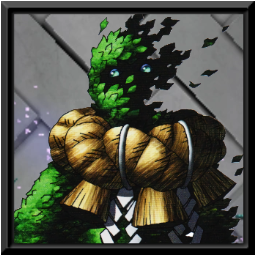My knowledge of 5e is definitely useful for some things but it also feels like a hindrance at times. I chose to make a character into the Battle Master subclass of Fighter. I misread quite a few of the maneuvers.
- Commander’s Strike uses one of your attacks and a superiority die to allow an ally to immediately make an attack as an action. This is useful for getting extra attacks out of especially heavy hitters like rogues. In BG3 it lets them make an extra attack on their turn. And I think they don’t get any extra damage from the superiority die.
- Maneuvering Attack uses a superiority die to allow an ally to use their reaction to move up to half their speed and not trigger opportunity attacks from the target of the attack. In BG3 it lets effectively lets them get a free disengage on their turn (so not just against your target). So it’s a little better and a little worse.
These were two of my favorite abilities as a fighter and it helped encourage me to keep other players focused when it wasn’t their turn. Also, we had a big group, so getting to do something small when it wasn’t your turn helped with the boredom.
I’m not complaining, some of the changes are good and some are bad. All in all you can’t really compare the two because one is a videogame and one is a tabletop game. A lot of the abilities have great QoL changes for videogames. Guidance lasting for a while is great. Many abilities that last a long time now just last until a rest. True Strike got a buff – it’s not necessarily great or anything but not pointless anymore. (True Strike did have some very small very niche uses but all in all it was mostly bad since it’s better to just attack twice 99% of the time.)
It feels like some of the spells have descriptions slightly wrong but maybe I’m just confused. I’m enjoying the game. It’s rough around the edges but I do like it.
Commander’s Strike in specific suffers in BG3 because you can’t combo with a Rogue to let them do extra sneak attacks.
Exactly, that was what I really wanted to do. I loved seeing the smile on our group’s rogues’ faces as they got to gather up a mountain of d6s when it wasn’t even their turn. This time it would’ve been me smiling at myself since I do single player lol.
I’ve picked several spells based on 5e opinions of them, only to discover it’s different in BG3.
Played 5E for the better part of 6 years. Overall it’s helpful for the systems, but I also almost exclusively played Druid with a little bit of wild magic sorcerer and Cleric in a couple one shot/two shot campaigns.
I think as the game matures, we’ll see some mods come into play that make it a bit more faithful to the tabletop. I don’t know how it’ll affect the overall “balance” of the game, but I’ve always felt that mods can help tailor the game to your personal taste. Maybe Larian will patch in new features as time goes on
I’ll be honest, I could see an expansion that adapts the game to OneD&D (6th Edition)
There’s no grappling. My poor barbarian…
Shoving’s pretty hilarious, at least 🤷🏼♂️🤣
frenzied throw on goblins as well
Oh, wait until you get to huck the non-stop-shit-talkin’ duergar. 🤣 So satisfying.
(Too bad you can’t throw them into the water, though. 🤬 What kinda BS is that?!)
Here’s an important one: in BG3, spells like Cloud of Daggers that deal damage when enemies start their turn in the area, or enter it, ALSO deal damage when cast. Since they are balanced as though you’re usually only going to get one damage tick, this makes them roughly twice as good. You will get two ticks before they have an opportunity to move.
Also: barbarians can choose whether to Reckless Attack after they see if their attack hits or misses without Advantage. And in fact, if you have advantage already and miss anyway, you can Reckless Attack for a third die roll. Tides of Chaos works this way too, but only for attack rolls and saving throws during combat, not for checks during dialog.
Re: spells - that’s usually how they work in DND too. They’ll say like “when you cast” in addition to “when a creature enters for the first time on it’s turn”
This is the rules text for Cloud of Daggers:
You fill the air with spinning daggers in a cube 5 feet on each side, centered on a point you choose within range. A creature takes 4d4 slashing damage when it enters the spell’s area for the first time on a turn or starts its turn there.
The intention is that it does not deal damage when cast. Check the math versus another 2nd level damage spell, Scorching Ray: the Ray requires three attack rolls, and does a maximum of 6d6 damage if every ray hits, for an average of 21 damage, but more like 13-14 damage when factoring in a likely 65% hit chance. Cloud of Daggers deals 4d4 (average 10) damage. The slightly lower damage is because there is no chance to miss, and there is potential upside if you can hold them in the cloud or push them back into it.
If you allow it to tick when cast and at the beginning of the enemy turn, then you double the damage. Guaranteed 8d4 (average 20) damage is excessive for a 2nd level spell; that’s close to the three-hits scenario for SR, reliably on every cast! It’s also more damage than Melf’s Acid Arrow does when you hit the attack roll, so there’s no reason to ever cast Acid Arrow if this version of Cloud of Daggers exists (unless you are desperate for 30 more feet of range).
Interesting, TIL the tables I’ve played at may have been interpreting these kinds of spells wrong.
Do you happen to have an official comment disambiguating this? If not that’s fine. Basically the reasoning has been “when you cast it is also the first time they enter the spell area”, although it did seem like a lot of damage for that level of spell.
Oh shit, you’re totally right. My bad!
Yeah in all I’d say my 5e knowledge is helpful, because the big picture things are still in place, so I know what I’m doing when it comes to character creation and levelling (assassin rogue still sucks), as well as spell selection. It’s also nice that Monk and Ranger are improved from tabletop, because I’ve always been partial to those classes. But I definitely can be hindered by my “knowledge”, because some things aren’t quite as good as they were in tabletop, or work differently, which can obviously cause some problems. Overall I’m totally fine with the differences so far; I haven’t come across any changes that I think are stupid
One thing that was confusing at first was some things saying they use both your actions and bonus action. Then it occurred to me they mean that because you click a single button then attack where as in DND you’d be activating the bonus action then doing an enhanced attack.
I haven’t played table D&D for a long time. I played 1st and then 2nd edition. And then I bought the 5e books and casually read them for fun. The only D&D I play now in video games. Loved Solasta and it followed the rules of 5e mostly. It is a small company and I love supporting them.
And Baldur’s Gate 3 has been a dream come true. I see my 5e knowledge as a big plus even if sometimes what you can do is limited because of a video game. It is still very faithful to the rules.
Man it bugs me so much that healing word takes away the action of the person you healed
Wait, is THAT what is happening?!?? I couldn’t figure it out. WHY!?
I’m pretty sure that’s not true. When getting up after being downed, a character loses their action, and a very common way of getting someone up is by using Healing Word, so I think you might be mistaking the downed action loss for a Healing Word action loss







